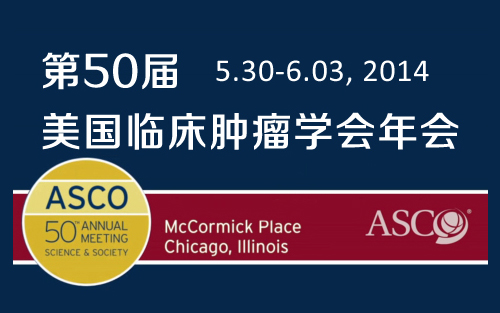
第50届ASCO全体会议重点报告了旨在比较四种最常见的无KRAS基因突变的转移性结直肠癌(Metastatic colorectal cancer,mCRC)患者采用一线方案(first-line regimens)的III期临床试验结果:试验失败。研究人员指出,该试验的失败正体现了药物靶向治疗疾病的实验方法存在障碍,然而这只是冰山一角,需要学习的东西还有很多。
在这项试验中,患者中位生存期(Median survival)约为29个月,不管使用哪种化疗方案:罗氏(Roche AG)的贝伐单抗(Bevacizumab)和化疗、礼来公司(Eli Lilly)的西妥昔单抗(Cetuximab)和化疗。而使用FOLFOX或 FOLFIRI疗效也无多大差别。因此,无法确定哪种方案更好。
该临床试验选择了1137例未接受治疗的转移性结直肠癌患者,并随机分配,或采用贝伐单抗联合化疗方案,或采用西妥昔单抗联合化疗方案,化疗方案则依据医师的建议,26.6%的患者选择奥沙利铂,剩余73.4%则选择伊立替康,患者跟踪治疗中位数为24个月。结果发现患者的总生存期(OS)或无疾病进展时间(PFS)并无明显差异。使用贝伐单抗的患者组的OS和PFS分别为29.0和10.8个月。而使用妥昔单抗的患者组则分别为29.9和10.4个月。实验方案均无副作用发生。因两组患者OS都为29个月,因而其将会成为CRC临床试验新的参照标准。虽然有10%的患者生存期超过了5年,但该结果适用于某些实际情况而非学术上的理想情况。
这项临床试验持续10年,并采集了44000个活体样本。研究人员认为在确定合适的试验对象时,或需要进一步进行分子水平的分析。同时,增加样本量也有助于发现治疗方案的区别,提高实验准确度。
英文原文:
ASCO 2014: Pick your poison in CRC; pending bigger trials, they all look the same
By, Staff Writer
CHICAGO – Like the late-stage adjuvant breast cancer study that failed but brought big benefits, a phase III study comparing the four commonest, first-line regimens in metastatic colorectal cancer (CRC) without KRAS mutations may have seemed a letdown at first.
But the trial, one of a handful highlighted during the plenary session of the 50th annual American Society of Clinical Oncology, set a new bar for experiments with drugs targeting the disease, and yielded findings that represent “the tip of the iceberg of what we stand to learn,” said Alan Venook, physician at the University of California-San Francisco, who presented the data.
In the study, median survival was about 29 months, no matter which approach was used: bevacizumab (Avastin, Roche AG) plus chemotherapy or cetuximab (Erbitux, Eli Lilly and Co.) plus chemo. The regimens FOLFOX (oxaliplatin/5-fluorouracil/leucovorin) or FOLFIRI (irinotecan/5-fluorouracil/leucovorin) both turned out acceptable, too.
“We had no knowledge which one would have been better,” said Venook. “This was essentially looking for a difference in the treatment arms.” But the experiment found “no difference between these two therapies [bevacizumab and cetuximab] as a starting point for these patients.”
Enrolling 1,137 patients with untreated metastatic CRC, the study funded by the National Institutes of Health randomly assigned them to get bevacizumab plus chemo or cetuximab plus chemo. Selection of the chemo regimen was based on physician preference, with doctors for 26.6 percent of patients opting for FOLFIRI and 73.4 percent for FOLFOX. The median follow-up was 24 months.
Researchers found no significant differences in either overall survival (OS) or progression-free survival (PFS) between the treatment groups. In the bevacizumab plus chemo arm, OS and PFS totaled 29 months and 10.8 months, respectively. In the cetuximab plus chemo arm, the numbers were 29.9 months and 10.4 months respectively.
No new treatment side effects turned up. The OS of 29 months in both arms sets a “new benchmark” for CRC trials, with 10 percent of patients in the study living beyond five years, Venook said, and “results apply in a variety of practice settings, not just academic settings.” Importantly, the study “clarifies the standard of care” and “answers a question that industry might not ask,” since the answers could go against the interests of drug makers, he said.
The study lasted 10 years, involving 14 amendments and 11 interim analyses,” We took as long as was necessary to get the answer,” Venook said. Some 44,000 biospecimens were collected, yet to be fully analyzed. “We hope that this can inform future studies,” he said.
Meanwhile, what’s a clinician to do, when choosing a regimen in CRC? “Flipping a coin is not optimal,” Venook said, in response to an audience member’s question. “Further molecular analysis may be clearer about identifying patients who are the proper candidates. Expanded RAS analyses might inform us. We’re in the process of doing the analysis and we don’t have those results yet.”
The choice of chemo regimen is “very much market-driven in the U.S. Seventy-five percent of patients will receive FOLFOX, based on habit as much as anything else. I hope this study might raise the possibility of FOLFIRI,” Venook said, though toxicity has most to do with selection. “Cetuximab, frankly, causes a severe skin rash in many patients, and that would be something that should be considered as well.”
Findings of the experiment point to the need for larger trials, which could yield more precision and show plainer differences between treatment choices. “This is very much good to have these options,” Venook said. “As we evolve and get more biomarkers, for example, I hope we’ll be more clear on what the right thing to do is.”


发表评论
关键词:论文翻译润色,论文评估,SCI投稿,SCI期刊发表,医生出国进修